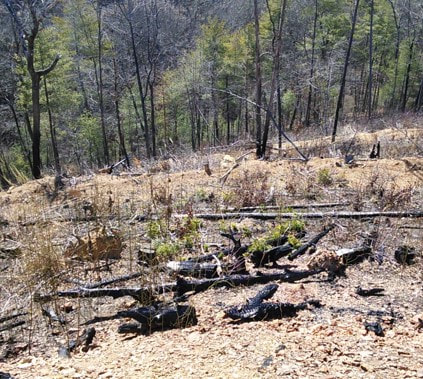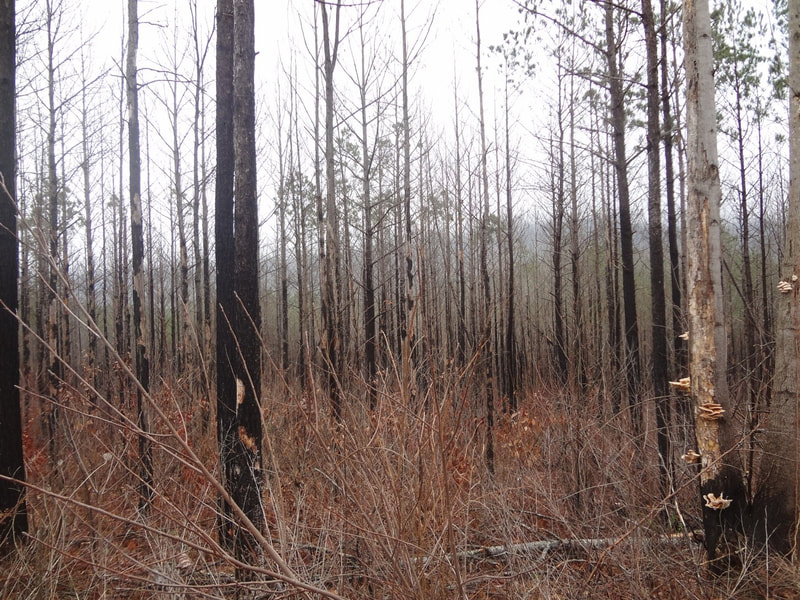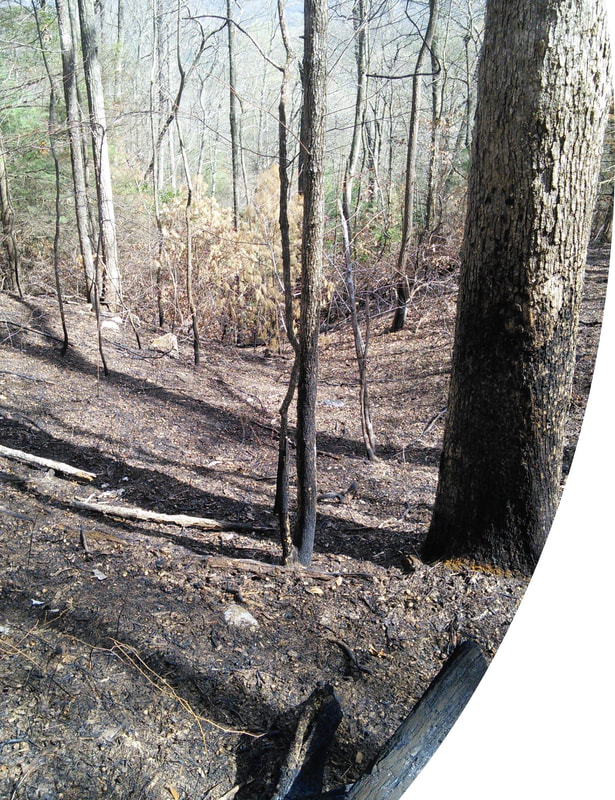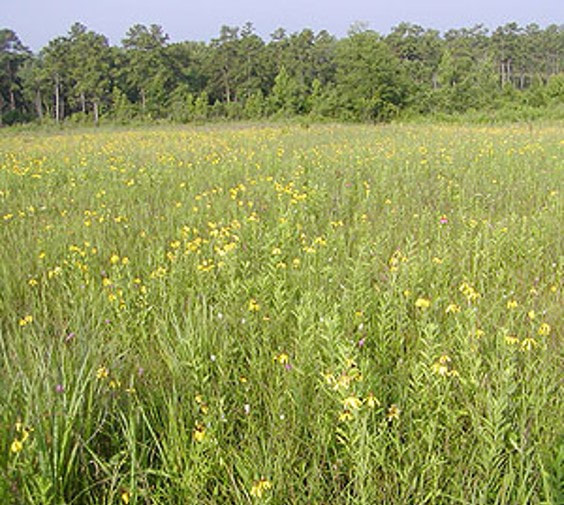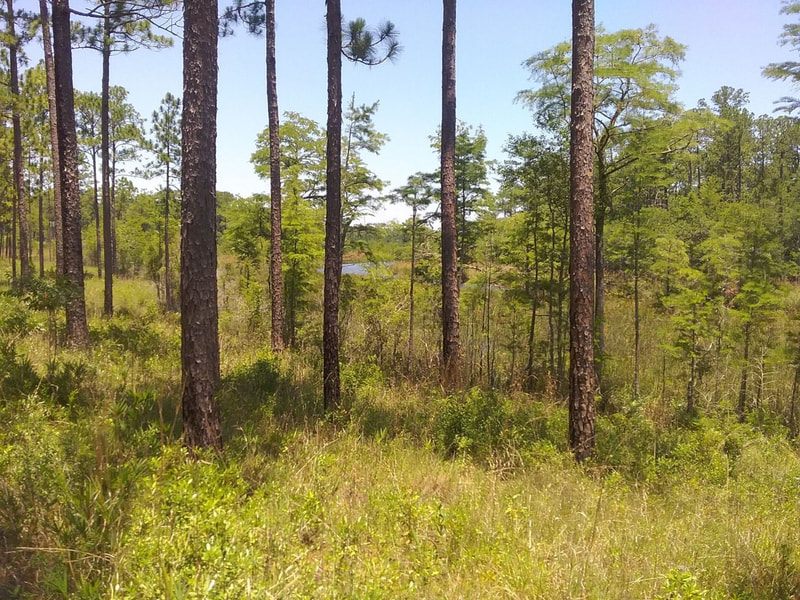Fire in the East
While fire dynamics are complex everywhere, the agency needs to take a hard look at significant differences in Eastern lands from many perspectives: in ecology; in land ownership patterns; in the funding structure; and in the way in which timber projects plan supposed "win-win" agendas that attempt to uneasily blend silviculture, burn budgets, and restoration.
The goal of "restoring fire-dependent/associated forest communities" has become an almost monolithic goal for the agency in that conflates "oak decline" theories with restoration of various upland habitats of varying degrees of canopy openness. While there are certainly places on the Forest Service's inventory that have historic fire association (prairie remnants in the Bienville and Tombigbee; longleaf communities in places like the DeSoto, Conecuh, and other Gulf Coastal forests), the science behind identifying these sites and their actual historic fire dynamics is not conclusive, and has sometimes been applied as little more than to provide ecological cover for logging and justifying large-block burn budgets. Our "Three R's" presentation documents problems with these and other forest restoration problems across Eastern Forests.
So elastic and interchangeably used are the " restore fire-associated communities", "arrest oak decline", and "open communities establishment" agendas that we see these justifications applied in places like the Brawley Project in the Chattahoochee and the LRMP and "8600" project at the Land Between the Lakes to dubious effect. Brawley is a project that has gone on for over a decade to "restore" various open oak-pine woodland/savannah habitats that has produced little more than charred trees and an understory of coppice that neither burns nor its modern "mimic" (herbicides) can seemingly cure.
The Land Between the Lakes takes these justifications further beyond a similar project known locally as the "8600" (Oak-Grassland Demonstration Area) to the plan level, where boilerplate language in the LRMP calls for arresting "oak decline" in what is one of the most oak-dominant forest in the East- as if nobody had bothered to walk the forest itself. Indeed, mesic habitats may be underrepresented, as the flooding by the Tennessee Valley Authority to create Lakes Barkley and Kentucky flooded many of the lowlands. This is to underscore the lack of rigor in fire science in the region and how it has created a host of bad projects that do not result in agency-desired pine, pine-oak, oak, and oak-pine forests. Countless stands of forest across the east are a testament to these policies that have gathered steam since the 1990's, where logging recovering second growth stands that initiated from the 1920-1940 reforestation era has only exacerbated biodiversity loss and near-monoculture stands to the point that the agency is "re-restoring" failed projects from 15, 20, and 30 years ago. This can be found all over forests like the Shawnee, the Daniel Boone, the Cherokee, the Pisgah ,and many more.
Fire has some role to play in the East, but everything- from the science, to the program's tie to logging targets, to the funding structure- need reform. Some rangers have privately acknowledged that they are constrained by agency budgeting that requires typically four-figure burn blocks when many legitimately fire-associated communities were often historically small and patchy. Allowance for more targeted siting and application, as well as better research into siting and implementation would yield better ecological returns.
Fire has some role to play in the East, but everything- from the science, to the program's tie to logging targets, to the funding structure- need reform. Some rangers have privately acknowledged that they are constrained by agency budgeting that requires typically four-figure burn blocks when many legitimately fire-associated communities were often historically small and patchy. Allowance for more targeted siting and application, as well as better research into siting and implementation would yield better ecological returns.
